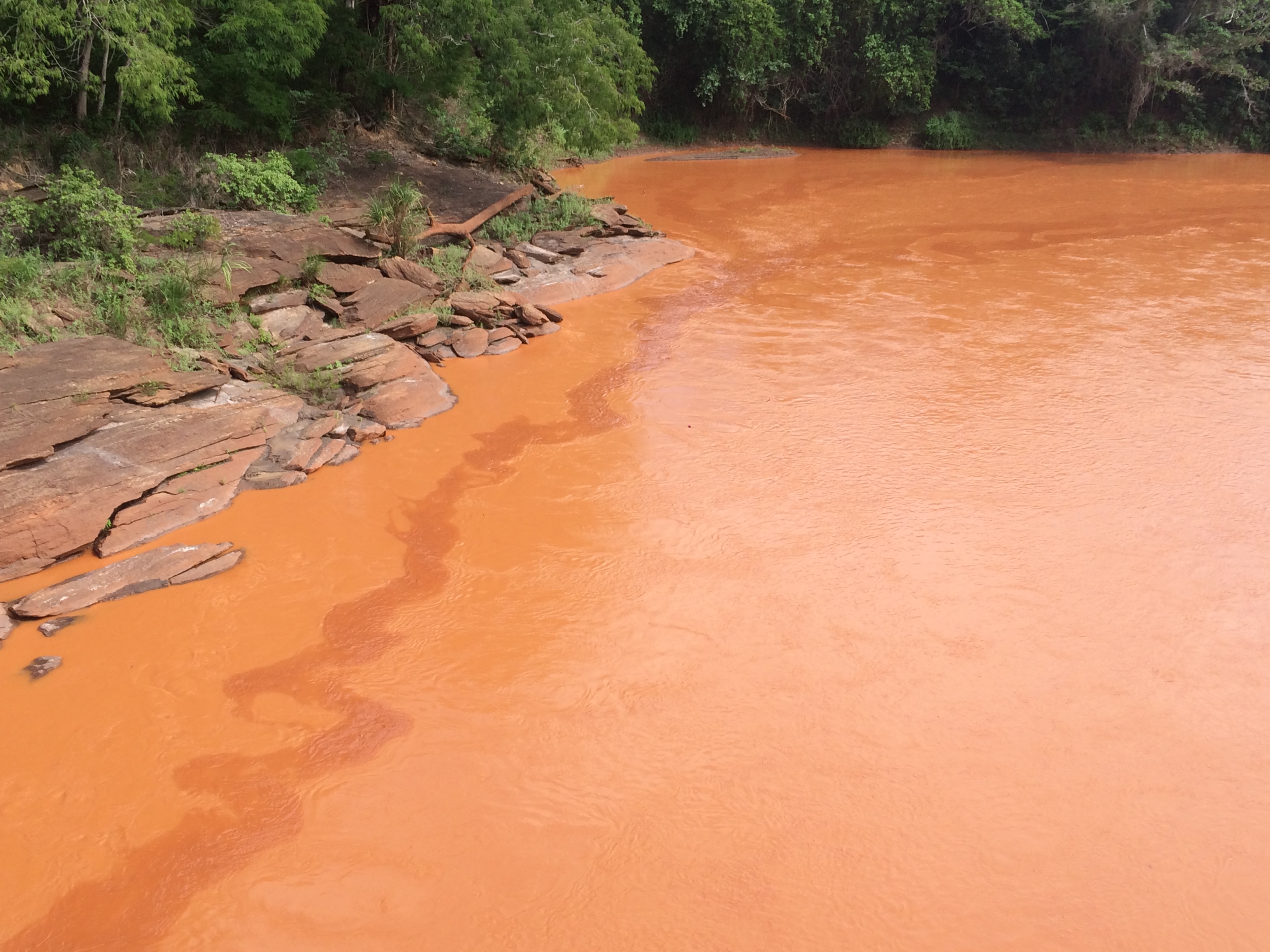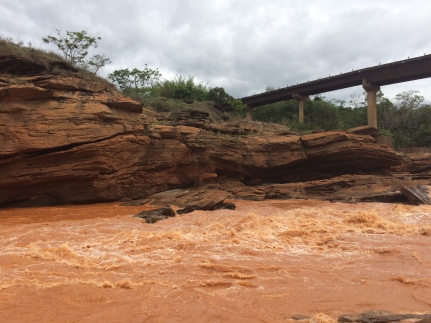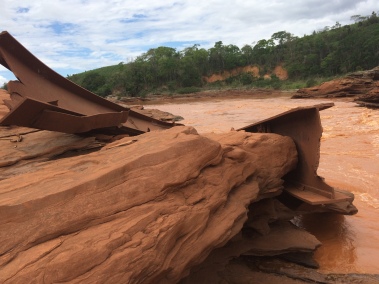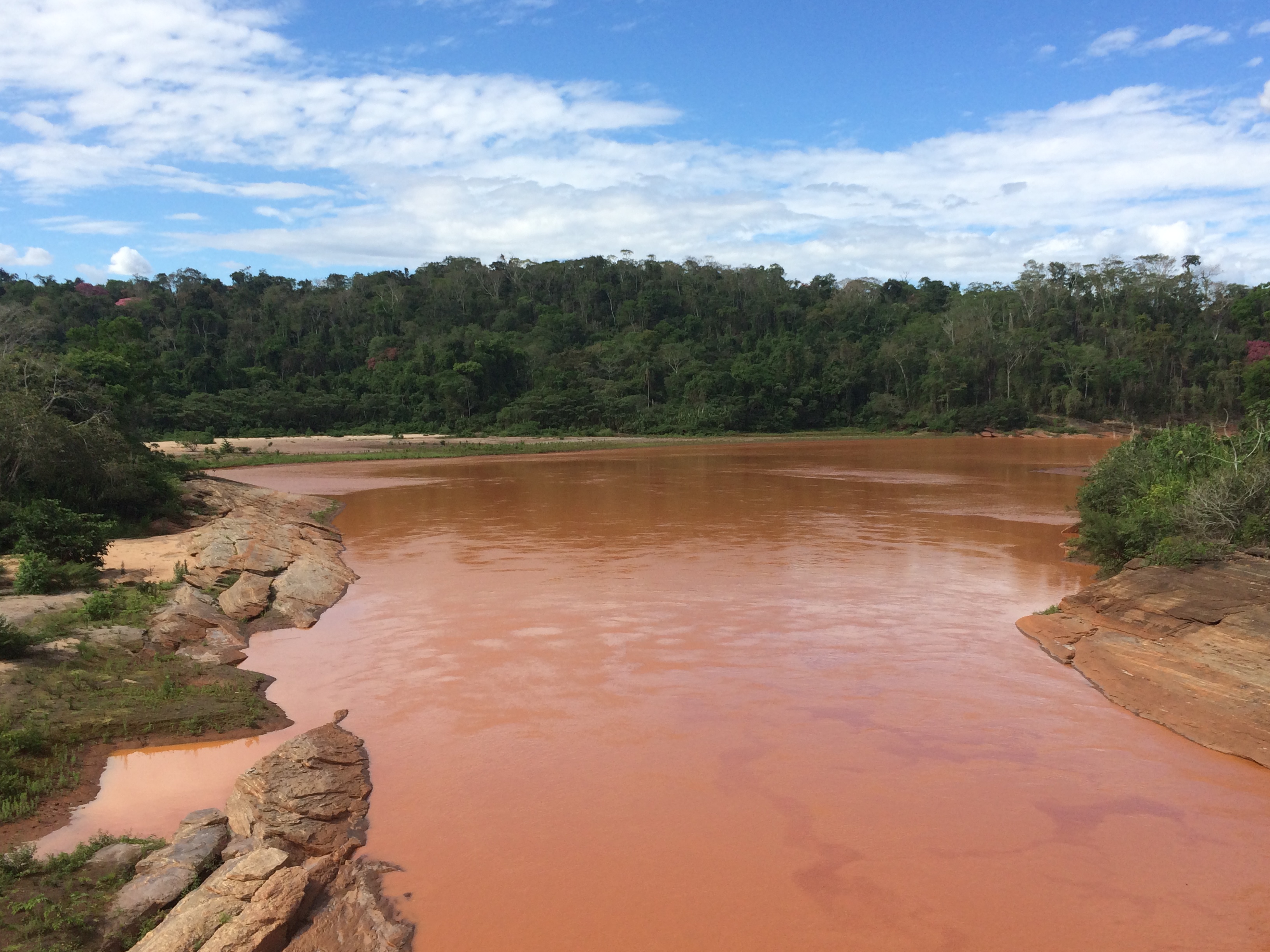“The Bitterness of the Doce River—One Year Later”
By Lise Sedrez
It was way worse than I thought.

Over the last three days, with a group of colleagues, I looked at the Rio Doce and asked myself how we could have done this to the river. Rio Doce has nurtured Brazilian history for hundreds of years, offering water, wealth, food, joy, and beauty. We repaid it by poisoning it with mercury in gold mining operations in the past, polluting it to critical levels with PET bottles and raw sewage, destroying its riparian vegetation and, finally, burying 600 km of it under tons of mining waste.
We talked to small farmers, to urbanites, to managers in conservation units about the big socio-environmental disaster on 5 November 2015, when 50 million cubic meters of sediment from a broken dam (controlled by Samarco, associated with the mining giants BHP/Vale) created a wave of toxic sludge that consumed the river, killed at least 19 people, and destroyed communities and livelihoods. It crossed forests and cities. It reached the ocean.  It was a nightmare. People remember seeing the mud replacing the clear waters of the river, and their incredulity about what was happening. They mostly remember the stench of thousands and thousands of dead fish, and how not even vultures would touch them. They remember the fights for water, the quasi-riots in Governador Valadares, a city with over 270 thousand residents that is located by the river and completely dependent on the Rio Doce for drinking water. They remember their own tears.
It was a nightmare. People remember seeing the mud replacing the clear waters of the river, and their incredulity about what was happening. They mostly remember the stench of thousands and thousands of dead fish, and how not even vultures would touch them. They remember the fights for water, the quasi-riots in Governador Valadares, a city with over 270 thousand residents that is located by the river and completely dependent on the Rio Doce for drinking water. They remember their own tears.
When people talk about the anniversary of the disaster, though, they usually miss an important point.

The disaster is not over. It will not be over anytime soon. The mud keeps coming. We saw it—a constant stain that looks like brown shoe polish floats on the already rust-red waters. A good part of the sludge remains at the edges of the river, like red sandbanks, forming a new—and dead—shoreline. Another part has been stopped by dams, but it is a precarious equilibrium. The rainy season is late, but when it comes, a new wave of sludge will flow from these dams and sandbanks through the river. And the full extent of the nightmare will be visible again.
Meanwhile, those who can afford to buy bottled mineral water. Those who can’t, well, they drink the water they have and hope for the best. Small farmers fear to cultivate vegetables, an important part of their income, as nobody can tell them for sure about the effects of heavy metals in the water. Water birds are missing, even in the beautiful Rio Doce state park. Fishermen, now with fewer sources for subsistence, often invade the park for hunting, if they can, and sometimes they cause forest fires. The Park workers have not received their salaries for 90 days now, so it is not as if there is much they can do to stop the invaders.

This was our first visit, and it won’t be the last. We are beginning to work together on a project that includes scholars from several universities, trying our best to comprehend the socio-environmental impacts of this ongoing disaster.
I will keep you posted.
Earlier this year, Robert Emmett and Claire Lagier interviewed Lise on the Samarco tailings dam spill. Here’s part one of the three-part series.
Leave a Reply